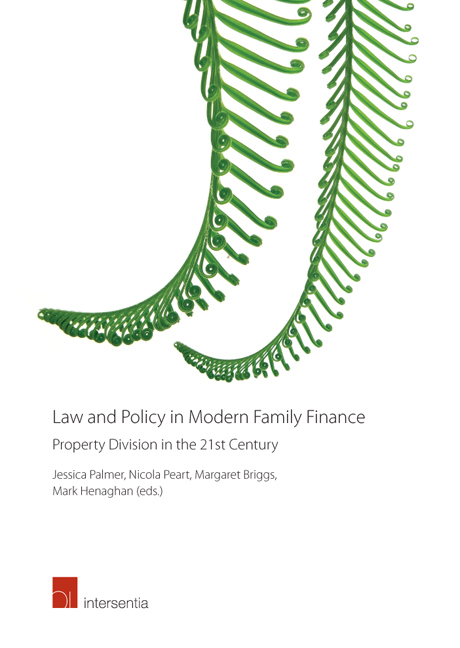Book contents
- Frontmatter
- Foreword
- Acknowledgements
- Contents
- Table of Cases
- List of Contributors
- Chapter 1 Introduction
- PART I WHO SHOULD BE COVERED BY A PROPERTY SHARING REGIME?
- PART II WHAT PROPERTY SHOULD BE COVERED BY A PROPERTY SHARING REGIME?
- PART III HOW SHOULD PROPERTY BE SHARED AT THE END OF A RELATIONSHIP?
- Index
PART II - WHAT PROPERTY SHOULD BE COVERED BY A PROPERTY SHARING REGIME?
Published online by Cambridge University Press: 29 September 2018
- Frontmatter
- Foreword
- Acknowledgements
- Contents
- Table of Cases
- List of Contributors
- Chapter 1 Introduction
- PART I WHO SHOULD BE COVERED BY A PROPERTY SHARING REGIME?
- PART II WHAT PROPERTY SHOULD BE COVERED BY A PROPERTY SHARING REGIME?
- PART III HOW SHOULD PROPERTY BE SHARED AT THE END OF A RELATIONSHIP?
- Index
Summary
In addition to identifying to whom a property sharing regime should apply, as discussed in Part I, a key question that must be answered is over what property should such a regime apply? What might seem the obvious answer – property owned by either or both of the parties to the relationship – is too simplistic. The chapters in Part II of the book consider the wider question of property identification through analysis of three more specific enquiries. While the chapters here place significant emphasis on New Zealand's regime, as do many of the chapters throughout this book, the questions posed and the responses suggested provide helpful reflections for thinking about the scope of property sharing regimes more generally.
Property is acquired for all sorts of reasons and for many different uses. A link between the property and the relationship that would justify sharing of the property between the partners on dissolution of the relationship may not be altogether clear. Some property may be used by both partners in their day-to-day living within the relationship, while some is used or enjoyed only by one of the partners. Some assets are acquired using income earned during the relationship, but some may have been received by way of gift or inheritance or acquired before the relationship commenced. The first enquiry, then, is should all property owned by the parties to the relationship be captured by a property sharing regime?
Bill Atkin addresses this question in Chapter 7. He identifies a spectrum of approaches available for the exercise of classifying property either as separately owned and outside the scope of the regime, or subject to division between the parties. The spectrum ranges, at the one extreme, from a presumption that all assets owned by either of the parties are to be shared, to, at the other extreme, the exclusion of all separately owned assets from the pool of property to be shared. Atkin advocates a position toward the ‘all assets‘ end of the spectrum in order that the concept of partnership is taken seriously.
- Type
- Chapter
- Information
- Law and Policy in Modern Family FinanceProperty Division in the 21st Century, pp. 149 - 152Publisher: IntersentiaPrint publication year: 2017



